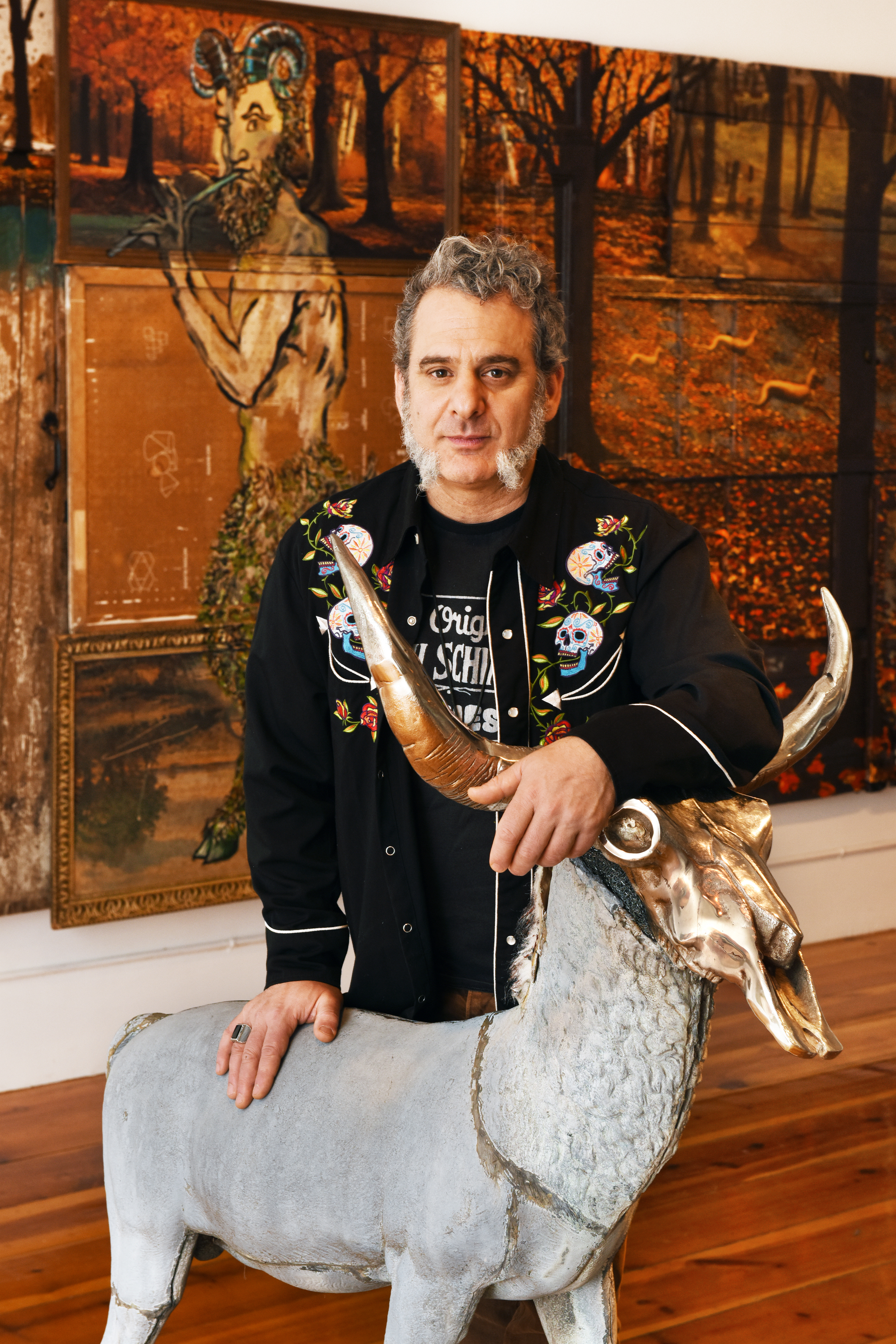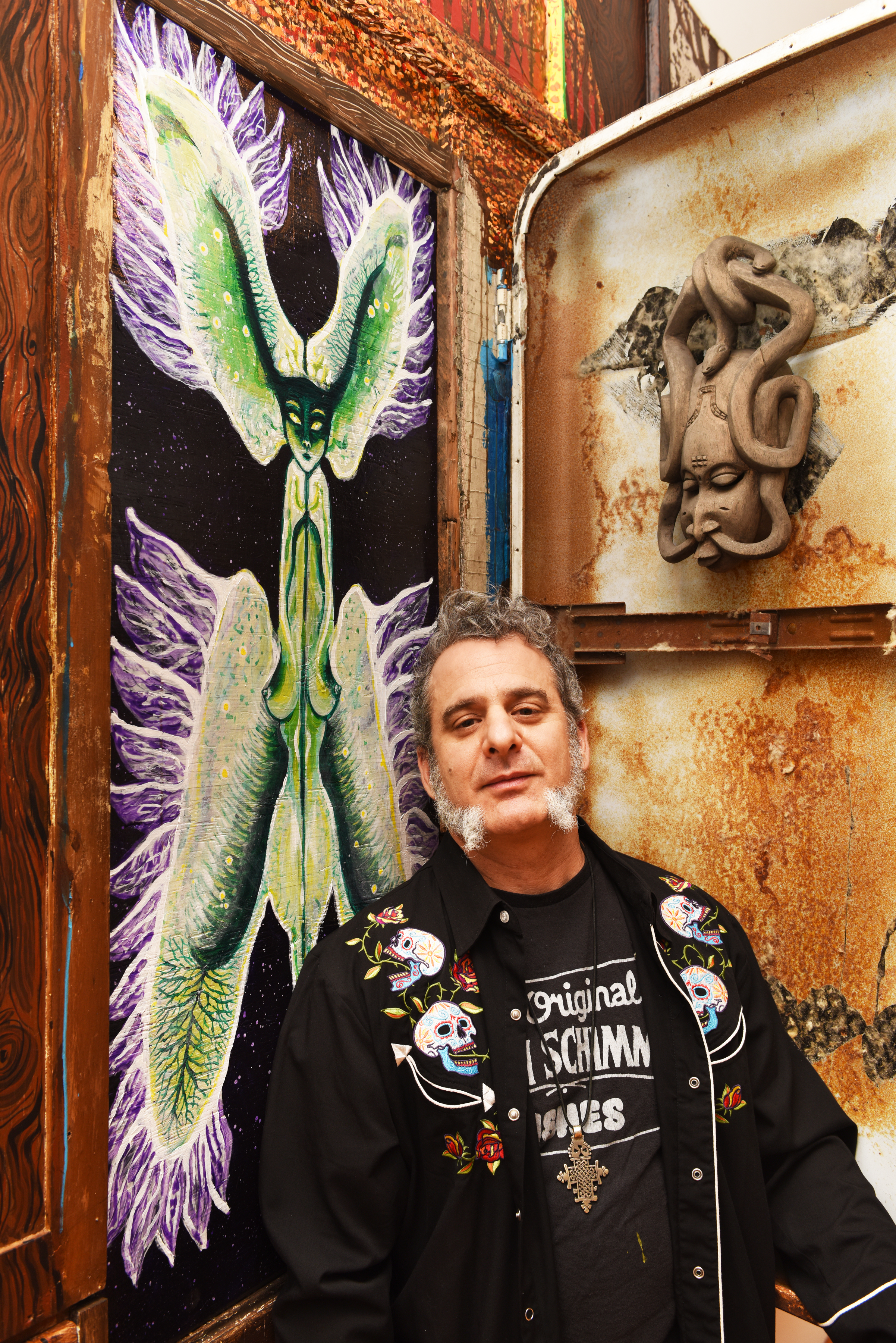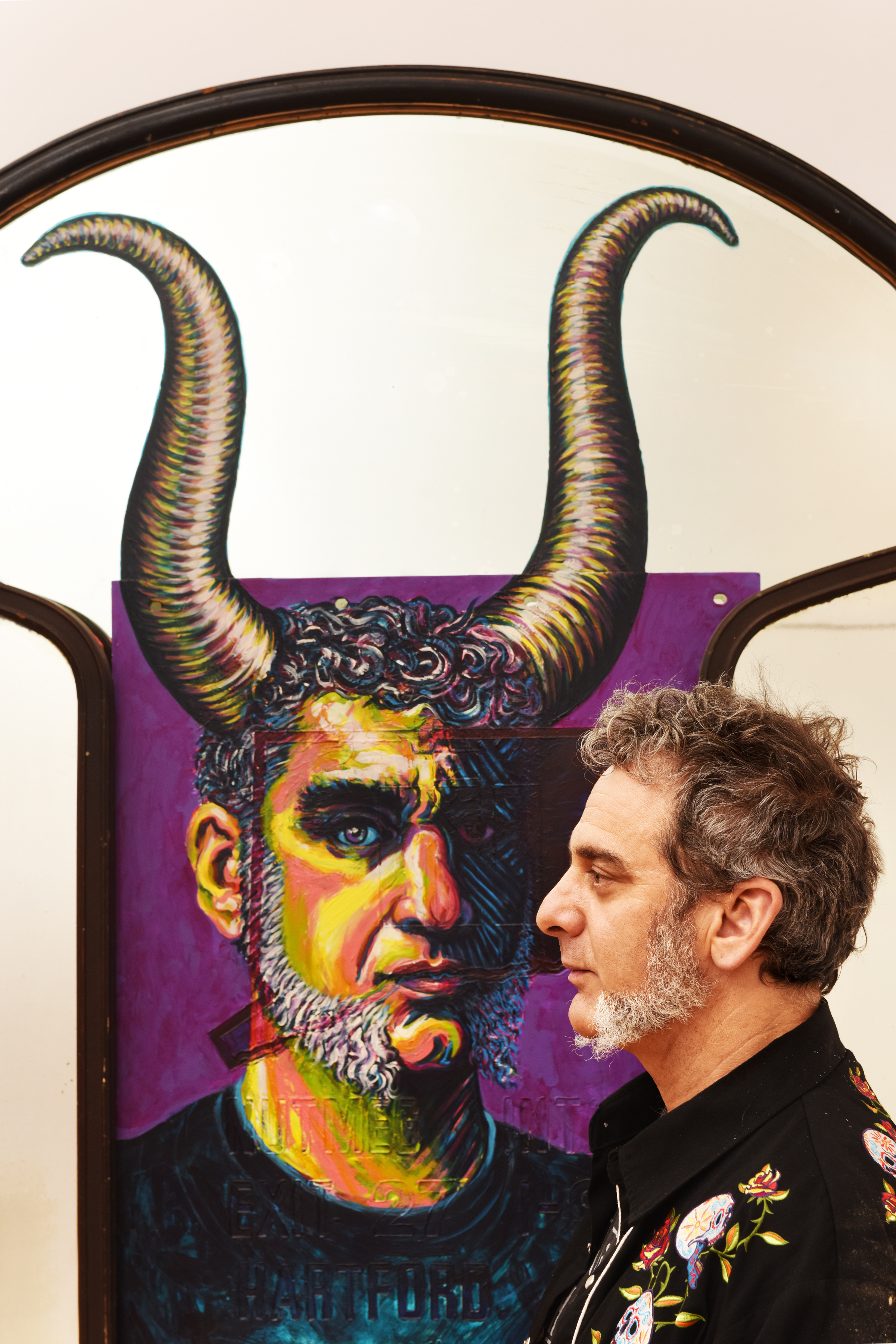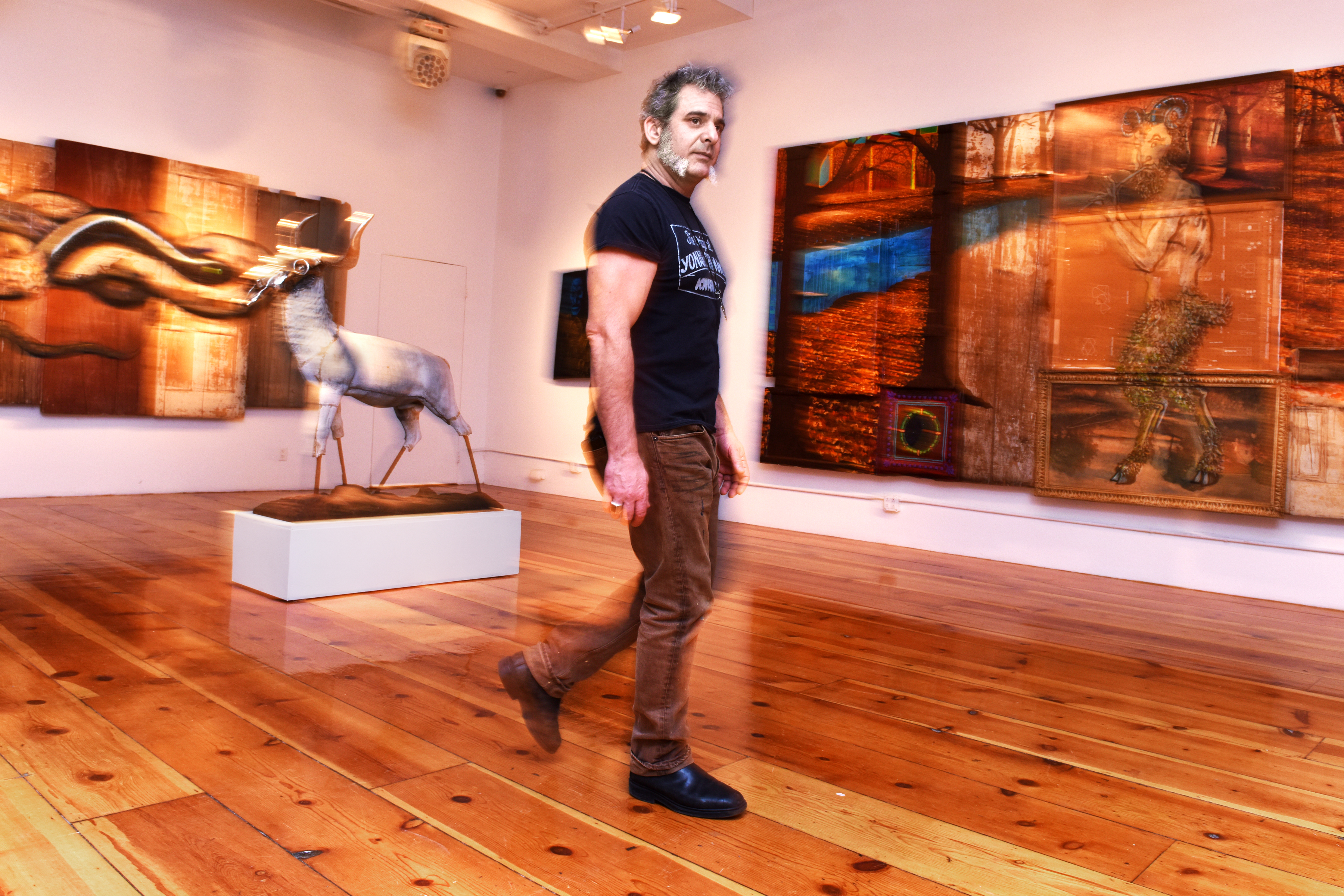
BY BOB KRASNER | There are times when input from a gallery director can be a catalyst for change. For Antony Zito, the “magic words” from Howl Gallery’s Ted Riederer regarding his latest show were the instructions, “all new work, and go big!”
“I’ve always mainly done straight portraits,” explains Zito, an Acker Award winning artist. “I love what you get from a face. I’m not usually a conceptual artist.”
Zito’s past portraits, notable for having been painted on discarded mirrors, cabinet doors, thrift store paintings, coffee cups and just “anything that can hold paint,” kept him busy for many years in his Lower East Side studio.
Having spent 25 years in NYC, he has recently gone back to live in the home where he grew up in Connecticut, following the death of his father. He took with him the contents of many storage spaces, having scavenged the streets for years for paintable debris.
The work in his solo show, called “My Father Was a Satyr,” is not just physically big, it is thematically so as well. Take “The Threshold”, a piece that stretches about 19 feet wide by eight feet high. Painted on a conglomeration of old doors, found paintings, barn wood, a peg board and a piece of a tin ceiling, the central figure is a satyr that takes the protagonist (possibly you) away from the innocence of childhood into a world of “adventure, possibility, danger and hope.”

Zito muses on the mythical image in the center of the piece, saying, “My father was an amazing artist and inspiration who frequently painted himself as a satyr. But it was the Roman version – more mischievous, less sleazy.”
Hidden in the piece are three doors. One door holds a drawing of his father’s, one has “the feminine presence” and one contains a quote from philosopher Alan Watts: “We do not ‘come into’ this world; we come out of it, as leaves from a tree.”
Animals represent various themes – the snake is metamorphosis, a deer is a catalyst, an 11-foot-high Griffin is “The Elixir of Life,” but humans are not entirely absent. In addition to a self-portrait titled “Mid-Century Satyr,” the artist’s late friend, Mars Bar owner Hank Penza, is depicted as a shaman.

“Mars Bar – the last hardcore punk bar – was my home for a long time. I spent way too much time there,” muses Zito.
Living once again in Connecticut, he “misses the intensity of downtown NYC” and mentions that he was “angry for a while, as I watched the culture that I was part of disintegrate.”
But nowadays, he is happy to be in a “magical, incredible home, every inch handcrafted by my father. He was a stone carver and a painter who had never built a house before.” Zito goes on to reminisce about his upbringing, recalling that, “we lived out of the garden. My parents were hippies without the hippieness.”

The change of scenery helped change the focus of his work. Among other things, he wanted to convey “the mystery of the woods,” and what it is like to “get out into a space where you can breathe.” Although many of the materials originated in NY, he also “went hunting for antique doors with a New England feeling.” He notes that, “this is not an urban show.”
Thinking again about Riederer’s input, Zito states that the artistic director’s prime directive “really informed the whole show. It took over my life and I had an incredible time doing it. ”
More info here: zitogallery.com/































